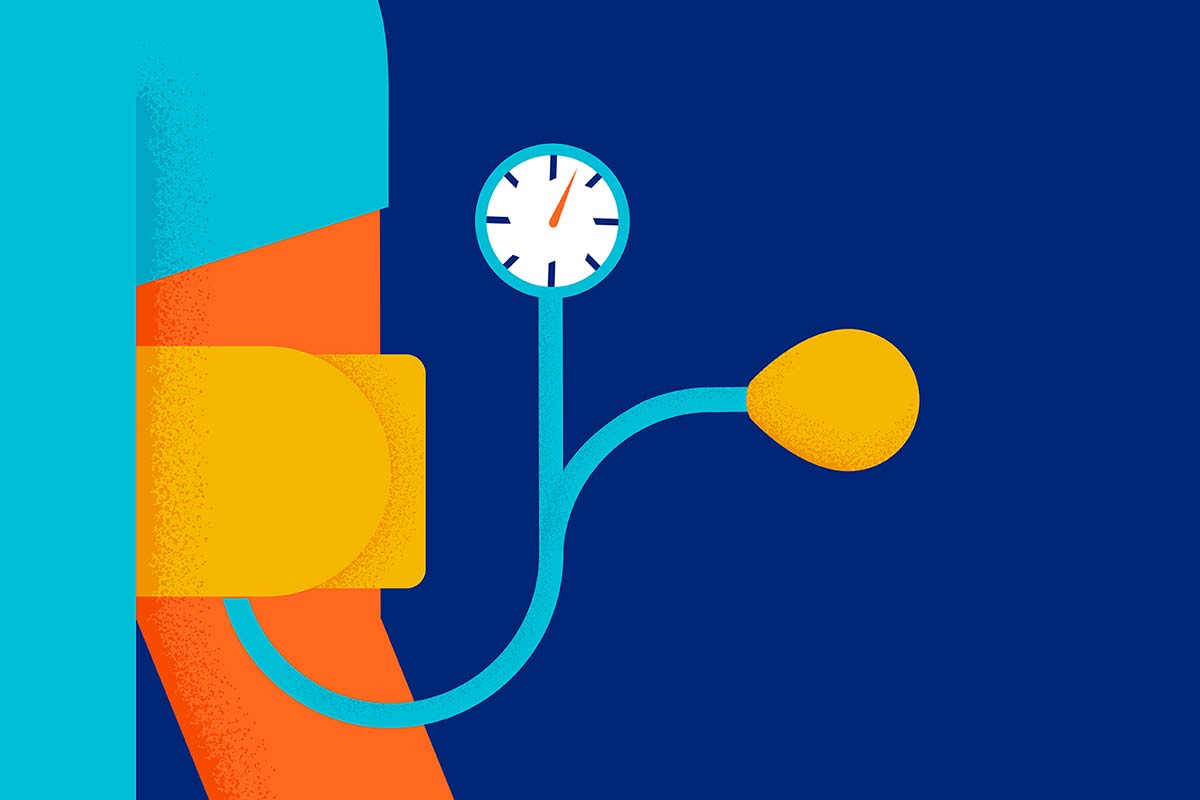Testing your blood pressure at home may save you money – and your health

During your annual wellness visit to your primary care doctor, the staff usually checks your blood pressure. But is that enough?
Consider this: according to the Centers for Disease Control and Prevention, someone in the United States dies of heart disease every 34 seconds. That’s about 697,000 people every year, or 1 out of every 5 deaths. And according to Jaime Murillo, M.D., senior vice president and chief cardiometabolic health officer at UnitedHealth Group, checking your blood pressure frequently can alert you (and your family members) to the onset of hypertension, thus allowing you to receive treatment and prevent serious complications.
“We call hypertension, or high blood pressure, the No. 1 silent killer,” says Dr. Murillo. “It can take years to feel the effects of high blood pressure in your body, and by the time you do, it can already have done damage to your heart, brain, kidneys and arteries. We know that 48% of people in the United States have high blood pressure, which means your chance of having it is about 1 in 2. And that is just the cases we know about.”
A study Dr. Murillo recently completed in Detroit bears out these statistics. His team went to churches, grocery stores and other spots throughout the city and selected people at random to screen them for elevated blood pressure. Their findings? Almost 60% of the people they tested had uncontrolled hypertension (blood pressures above 140/90). While the number seems shocking, the outcome was good — Dr. Murillo and his team were able to help 88% of the participants control their blood pressure within 12 weeks. The key is knowing you have the condition. And the key to that is testing your blood pressure regularly at home.
How to choose the best blood pressure monitor for use at home
You’ll see blood pressure monitors available at just about any pharmacy and many places online. But Dr. Murillo cautions that all blood pressure monitors aren’t created equal. “Testing of many commercially available monitors has shown their readings can vary widely, meaning you won’t get an accurate measure,” he says. He points to a partnership between the American Medical Association (AMA) and the National Opinion Research Center at the University of Chicago, which tested and validated home blood pressure monitors and posted their recommendations online. Find the best blood pressure monitors that meet AMA standards.
Tip: Does your health plan include a health savings account (HSA) or flexible spending account (FSA)? These accounts are designed to help you reduce your taxable income by putting money away for health care expenses, and you can use those funds to purchase an AMA-validated blood pressure monitor.
How to take your blood pressure at home
Once you have a good blood pressure monitor, you can check your blood pressure regularly. Start with twice a day at first — once in the morning before you eat or take any medications, and then again in the evening. Each time you measure, take 2 or 3 readings to make sure your results are the same. Follow these tips to help you get the most accurate results.
- Wait 30 minutes after you’ve exercised or consumed caffeine or alcohol
- Go to the bathroom so your bladder is empty (a full bladder may activate mechanisms that increase blood pressure)
- Sit up, with both feet on the ground and your arm on a table so it’s leveled with your heart
- Relax for 5 minutes before taking the reading
- If you have time, take 2 or 3 readings and average the results for the best accuracy
How to read your blood pressure results
- Top number under 120 and bottom number under 80: Your blood pressure is in the normal range. Keep up your healthy habits and keep testing regularly.
- Top number 130 or higher OR bottom number 80 or higher: Talk with your doctor about your risk for heart attack and stroke. You may need medications or to have your current ones adjusted. Lifestyle changes may also be in order, such as exercising more and eating healthier.
- Top number 180 or higher or bottom number 110 or higher: Call your doctor right away. The longer your blood pressure is high, the more you are at risk for heart attack and stroke.
Bring the at-home blood pressure monitor you choose to your doctor’s office at least once a year so the staff can check it against their machines. That way, you’ll know you’re getting the right numbers.